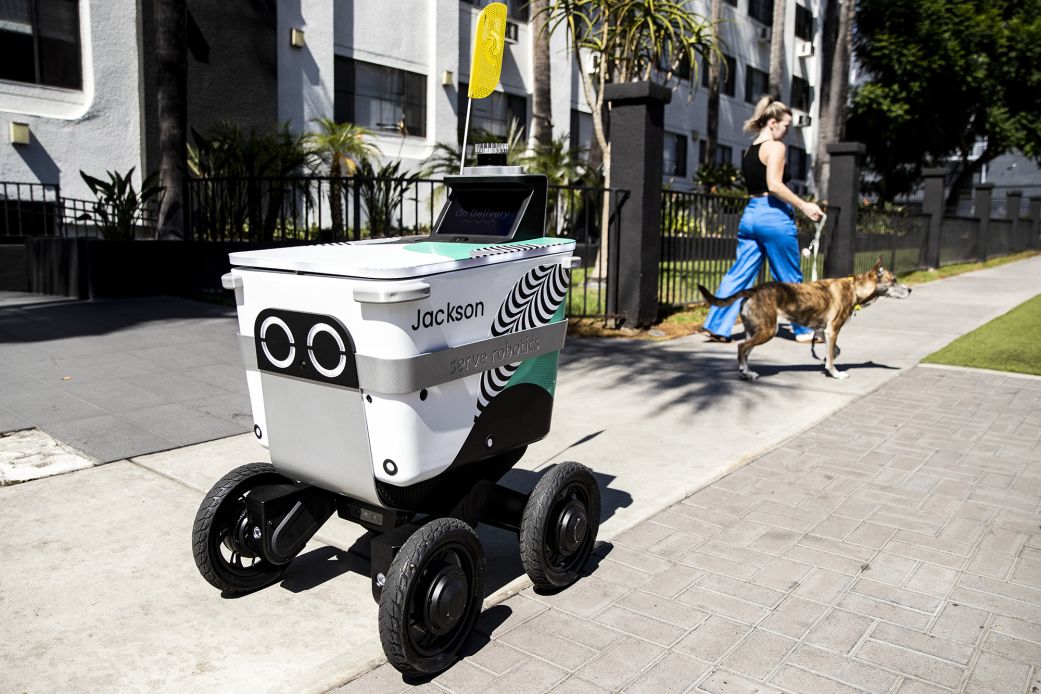
#Роботизирана доставка
Роботи в Атланта

Here’s a paraphrased version of the user content, aiming for approximately 600-700 words, focusing on key themes and narrative flow:
The arrival of Courtney and her fellow four-wheeled robot delivery companions in Atlanta has been a curious and somewhat unsettling experience. These Serve Robotics bots – names like Deandre and Orion – are designed to transport Uber Eats orders within a mile or less, but their implementation has revealed more questions than answers. Initially met with fascination, with people snapping photos and creating TikToks of the “future,” the novelty has faded, revealing a series of practical and ethical challenges.
These robots, while seemingly innocuous, are prone to navigational difficulties. They’ve become notorious for getting confused at crosswalks, exhibiting a hesitant, almost “first-time driver” style of movement until suddenly accelerating without warning. Despite their robust-looking off-road wheels, they frequently get stuck in sidewalk cracks, and much of their time is spent motionless.
The impact on Atlanta’s neighborhoods has been noticeable. Cyclists now actively avoid the bots, and Shake Shack patrons skillfully maneuver around them. The robots are becoming accepted parts of daily life, alongside the ubiquitous scooters, but this acceptance isn’t without friction.
Serve Robotics CEO Ali Kashani argues that the robots represent a logical step in reducing traffic and increasing delivery accessibility. The goal is to make delivery easier and potentially cheaper, though the current implementation feels more like a spectacle than a truly efficient solution.
However, the situation is complicated by concerns about trust and regulation. Joanna Bryson and Edward Ongweso Jr. raise valid points about the potential for unchecked corporate surveillance. These robots aren’t just delivering food; they’re equipped with cameras and microphones, raising serious questions about data privacy and potential misuse. The lack of regulation and standardization surrounding these AI systems is deeply concerning.
Several incidents highlight these issues. A man with cerebral palsy was struck by a Serve robot in Los Angeles, and earlier, a robot in Atlanta was seen swerving into the path of a disabled person. These events underscore the potential for harm and the urgent need for safeguards.
Despite the challenges, some residents have embraced the robots, with people sharing cheerful interactions with Courtney and her colleagues. But this positive sentiment masks a deeper unease – a fear of over-reliance on technology and the potential displacement of human workers.
Dylan Losey, a mechanical engineering professor, points out the “completely unregulated” nature of these AI systems. He emphasizes that we don’t fully understand the risks, highlighting the lack of standardized “safety” protocols.
The proliferation of these robots raises broader questions about our relationship with technology. Will we become overly dependent on automated systems? Will AI increasingly dictate our daily lives? Furthermore, some are concerned about the potential for military applications of this technology, adding another layer of worry.
The author's personal experience reflects this growing skepticism. After repeatedly attempting to "win over" the robots – placing multiple orders and even leaving a tip – they were consistently ignored. This frustration is compounded by the fact that the robots are often seen zipping along alongside heavy traffic, yet rarely deliver orders.
Ultimately, the story of Courtney and the other delivery robots in Atlanta is a microcosm of a larger debate: How do we integrate new technologies into our society in a way that is both beneficial and ethical? The initial enthusiasm has given way to a cautious recognition that these robots are not just a convenient delivery service, but a complex technological experiment with significant social and ethical implications. The journey of these robots in Atlanta is a reminder that innovation must be tempered with foresight and a deep understanding of the potential consequences.
0 коментара
Остави коментар
Scroll to Top


